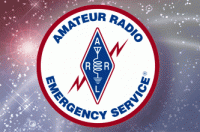FEMA to Conduct Interoperability Exercise Using 60 Meters
12/20/2016
FEMA Region X will conduct an interoperability communications exercise on December 21 that will use 60 meters. The “COMMEX” will consist of radio check-ins from authorized state, tribal, federal, and Amateur Radio stations to test HF interoperability in case of an emergency or disaster response. FEMA Region X is made up of Alaska, Idaho, Oregon, and Washington.
“Cities, counties, tribes, authorized Federal agencies and amateur operators that support jurisdictional emergency management organizations are welcome to participate,” Laura Goudreau, KG7BQX, Regional Emergency Communications Coordinator for FEMA Region X, said in announcing the exercise. “The coordination and authorization of this net between Federal stations and amateur licensees has been coordinated and authorized by the NTIA and the FCC.” Federal participants will include Department of Homeland Security, the US Coast Guard, FEMA, the US Army, the Military Auxiliary Radio System (MARS), Civil Air Patrol, and the Department of Commerce.
The net will include a digital component, intended as a one-way broadcast to test FEMA’s ability to send messages and for remote stations to receive them. To ensure compatibility with Amateur Radio stations, digital transmissions will follow ARRL’s recommendations for the use of digital modes on 60 meters.
A voice net will open on 60 meter channel 1 (5330.5 kHz USB) at 0900 PST (1700 UTC) with net control announcing the digital net (the alternate voice net frequency is 5403.5 kHz USB). The call for check-ins will be postponed until after the first round of digital transmissions. Participating stations should check in with call sign, city and state of operation, and a report on the ability to receive the digital messages, along with preferred mode.
Messages will be sent using Flmsg 4.0 using the “blank form” template. This will allow Flmsg users to validate 100% decoding of the message, yet also allow stations not equipped with Flmsg to still read the text.
The digital portion of the net will consist of two different messages, each repeated using different digital modes, PSK31 and MT-63-2KL. The first will be a brief introductory message intended to validate that stations are correctly set up to receive the digital messages. Reports from the second, longer message will help determine recommendations for modes to use in future exercises or real-world events.
The digital portion of the net will take place on channel 2 (5346.6 kHz USB), with the digital software centered at 1500 Hz.
Contact Laura Goudreau for more information.
SOURCE:
www.arrl.org/news/fema-to-conduct-intero...cise-using-60-meters 